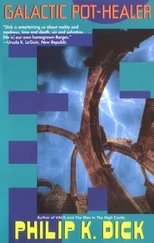The SF of Philip K. Dick concentrates less on the actual unbinding of these forces (Dick’s use of parallel worlds, his exteriorisation of internal reality) or on the “real” shape they might take than on attacking the forms of control which I have discussed—the presuppositions of the novel form and of science. Although the metaphysical solution is rejected, although there seems to be no final answer then to the question of what reality is, and although for Dick there can be no single, final reality, there is little pessimism in the endings of Dick’s novels when compared to the facile pessimism of the currently fashionable literature of despair. Although Ubik does mark the end of some of our illusions, it is hopeful in its refusal to close the conflicts by a pat happy or unhappy ending in much the same way as another important SF novel of the 1960s, Delany’s The Einstein Intersection . In Delany’s post-cataclysmic world, strange mutated beings roam the Earth and speak of a different and unknowable future, but one towards which they move deliberately, with hope and longing. Ubik , through the figure of Ella Runciter, also holds out the promise of a different, unknowable future. Ella is leaving half-life for a “new womb” to be “reborn.” This rebirth begins with the dissolution of the personality, as can be seen in Ella’s description of the intermingling and “growing together” of different personalities in half-life. But this rebirth is not described as reincarnation; it does not involve becoming something specific, something which has been designed or programmed: rather it is an opening towards new forms and new collective possibilities.
NOTES
1 The most recent such study is David Ketterer’s New Worlds for Old (1974), which argues SF’s pedigree by attributing it to a “form of accepted literature” which Ketterer identifies as “apocalyptic” (p. ix): “If more teachers of literature are to be convinced that science fiction is a viable area of study, it must be demonstrated to them that a novel such as The Martian Chronicles can open up to intense critical scrutiny just as Moby Dick can” (p. x). And to accomplish this accreditation he will employ a “critical strategy [which] involves the comparative, hopefully mutually illuminating consideration of science-fictional and non-science-fictional or ‘classic’ manifestations of the apocalyptic imagination” (p. x).
2 See the counterblast of S. Lem, “Philip K. Dick, czyli fantomatyka mimo woli” in his Fantastyka i Futurologia (Krakow 1973), 1:174-92. A modified version of this study appears in SF Commentary ##35-36-37 (Sept 1973) as “Science Fiction: A Hopeless Case—With Exceptions.” The exception is Dick, of whom Lem writes (pp. 22–23): “The surface of his books seem quite coarse and raw to me, connected with the omnipresence of trash…. Dick cannot tame trash; rather he lets loose a pandemonium and lets it calm down on its way. His metaphysics often slip in the direction of cheap circus tricks. His prose is threatened by uncontrolled outgrowths, especially when it boils over into a long series of fantastic freaks, and therefore loses all its functions of message.”
3 This discussion is based largely on the critical theories of the Tel Quel group: Tel Quel: Théorie d’ensemble (Paris 1968), in particular the critical and theoretical writings of Roland Barthes, Jacques Derrida, Julia Kristeva, Jean Ricardou and Philippe Sollers. For a critical appreciation of their work see Frederic Jameson, The Prison House of Language (Princeton 1972), pp. 172–186.
4 Marx’s theory of value is set out in Part 1, Vol. I of Capital , “Commodities and Money,” In 1914 Lenin summed that theory up as follows: “A commodity is, in the first place, a thing that satisfies a human want; in the second place, it is a thing that can be exchanged for another thing. The utility of a thing makes it a use-value . Exchange value (or simply, value) is first of all the ratio, the proportion, in which a certain number of use-values of one kind can be exchanged for a certain number of use-values of another kind… Their common feature is that they are products of labour …. The production of commodities is a system of social relations in which the individual producers create diverse products (the social division of labour), and in which all these products are equated to one another in the process of exchange. Consequently, what is common to all commodities is not the concrete labour of a definite branch of production, not labour of one particular kind, but abstract human labour—human labour in general…. After making a detailed analysis of the twofold character of the labour incorporated in commodities, Marx goes on to analyse the form of value and money . Here, Marx’s main task is to study the origin of the money form of value, to study the historical process of the development of exchange, beginning with individual and incidental acts of exchange…, passing on to the universal from of value, in which a number of different commodities are exchanged for one and the same particular commodity, and ending with the money form of value, when gold becomes that particular commodity, the universal equivalent. As the highest product of the development of exchange and commodity production, money masks, conceals, the social character of all individual labour, the social link between individual producers united by the market.” Collected Works (Moscow 1964), 21:59–61.
The specific parallel between value and meaning is developed by J.-J. Goux, “Marx et l’inscription du travail” in Tel Quel , op. cit.: “The phonic or scriptural materials become simply signs, simple signifiers (of an exterior, transcendent meaning); but their transforming function (as a means of production) and their transformed characteristics (as a product) are denied. The fact is that any meaning is but the product of work on and the work of real signs—the result of textual production—is hidden, as is the original use (or merchandise) value of money (gold or silver whose value comes from the work invested in its extraction) in order to reduce it to an arbitrary secondary sign, only a sign” (p. 193).
5 Darko Suvin, “On the Poetics of The Science Fiction Genre,” College English 34 (1972):375.
“In Lem’s Solaris , the narrator describes the theories of the Solarist Grastrom who “set out to demonstrate that the most abstract achievements of science, the most advanced theories and victories of mathematics represented nothing more than a stumbling one- or two-step progression from our rude, prehistoric, anthropomorphic understanding of the universe around us. He pointed out correspondences with the human body—the projection of our senses, the structure of our physical organization, and the physiological limitations of man—in the equations of the theory of relativity, the theorem of magnetic fields and the various unified field theories” (§11).
6 The investigation of the metaphysical or ideological presuppositions of science and scientific method as well as the demystification of science’s claims for its neutrality and objectivity have been the subject of a number of interesting and very different studies in recent years, from Boris Eizykman’s important Science Fiction et capitalisme: critique de la position de désir de la science (Paris 1974) to Arthur Koestler’s The Sleepwalkers (1968) and Daniel Greenburg’s The Politics of Pure Science (1967). For a look at the interrelationships of science, Marxism and political goals and the resulting successes and failures in the Soviet Union, see Loren Graham’s very valuable Science and Philosophy in the Soviet Union (1972).
Читать дальше








